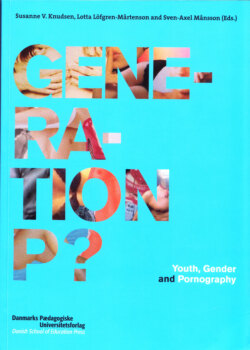Читать книгу Generation P? - Группа авторов - Страница 4
На сайте Литреса книга снята с продажи.
Definitions of pornography
ОглавлениеIn the Nordic countries, as well as in many other countries, there is concern and public debate about this development and about the implications and consequences of young people’s increasing experiences and use of pornography. However, very seldom is it made clear in this debate what is meant by pornography. At least in part, the meaning of pornography seems to lie in the eyes of the beholder. It also varies from time to time depending on the prevailing sexual morality. To capture the fluidity and breadth of the phenomenon, the American pornography researcher Milton Diamond has coined a rather broad definition of pornography as “any sexually explicit material primarily developed and produced to arouse sexual interest or provide erotic pleasure” (Diamond 1997, 4). A broad and encompassing definition is particularly adequate if, like Diamond, one wants to study the production and consumption of pornography in different cultural contexts. Within this broad definition one sometimes talks about soft- as opposed to hardcore pornography in order to distinguish between low and high levels of explicitness or intrusiveness. Furthermore, expressions such as ‘erotica’ or ‘erotic pictures’ are used to characterize representations that emphasize the more sensual elements of human sexual actions and encounters.
However, simply to define pornography as more or less intrusive or sensuous depictions of bodies, genitals and sexual activity does not catch the essence of it. Certainly, these definitions or distinctions tell us what we see, but the social meaning of pornography stretches beyond them. Secretiveness, prohibition and social transgression are all integral parts of the meaning of pornography; they are what constitute the attractiveness and desirability of the phenomenon. Or to cite the often quoted American pornography researcher Brian McNair:
Pornography is seductive because it represents the secrets of private sexual desire in all their taboo-breaking, transgressive exoticism. It is, by definition, a violation of public morality and taste – an affront to community standards in the sphere of sexual representation, whatever they may be (McNair 2002, 42).
This way of defining pornography, as a transgression of public morality, raises some interesting questions. One of them is McNair’s own: What would happen if restraints on the unacceptable, specifically pornography, ceased to exist in a meaningful way, i.e.,if everyone had access to everything everywhere. Impossible? No, not at all. In fact, due to new information and communication technology, particularly the Internet, we seem to have arrived at that point already.
